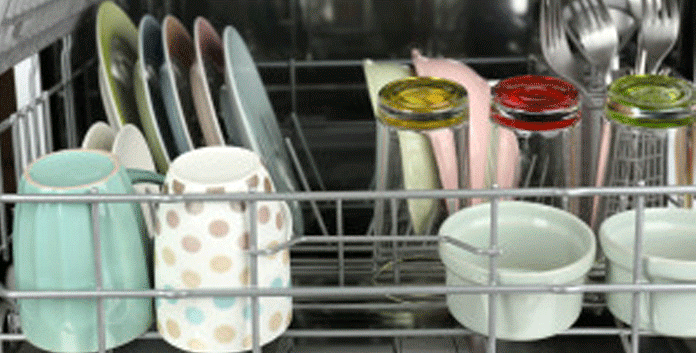
Water | Resources
Latex: Synthetic, Natural, Organic—Dunlop and Talalay
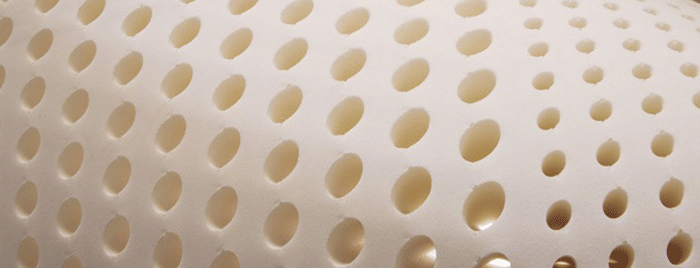
Question from Donna
Hi Debra,
I own three Savvy Rest mattresses (twin, full, and king) all made from Talalay latex as I prefer how that feels. You mention that Talalay is petroleum-based. Is that correct? Savvy Rest lists both Talalay and Dunlop as natural latex. Yikes! I’m pretty worried now that I have petroleum based latex in three very expensive beds.
Debra’s Answer
I did say that Talalay latex is petroleum-based. When you asked this question, I went back and took another look at latex and want to be more specific.
Latex foam used in mattresses can be confusing, so I’m going to sort it all out clearly here.
There are a lot of details about how latex is made, but in this post I am just going to focus on types of latex, what they are and how they are labeled.
There are two parts to understanding latex
1. the source of the latex
2. the process used to turn the latex into foam
Sources of Latex
The raw material to make latex foam for mattresses and furniture are are
1. crude oil
2. sap of the rubber tree Heaven brasilliensis
Latex made from petroleum is called “synthetic”. The most common type of synthetic latex is SBR (styrene-butadiene rubber). Yes, styrene like Styrofoam cups, which leach styrene into beverages. Synthetic latex as a stronger odor than natural latex and usually does not mean emissions standards of testing organizations such as Oeko-Tex and Greenguard.
Synthetic latex is often mixed with natural latex and marketed as “blended.” But it’s not half and half. Usually blended latex is mostly synthetic with a small amount of natural latex.
 Natural latex is made from the sap of the rubber tree. The sap is “tapped” from rubber trees much in the way maple syrup is tapped from maple trees.
Natural latex is made from the sap of the rubber tree. The sap is “tapped” from rubber trees much in the way maple syrup is tapped from maple trees.
There are two types of natural latex:
1. natural latex
2. organic latex
While both come from the rubber tree, natural latex may have various chemicals used in the growing or processing of the sap, which are mostly unknown.
Organic latex sap is certified to usual organic standards.
So there are basically three raw materials:
1. synthetic SBR latex
2. natural latex sap
3. organic latex sap
Processes to Turn Latex into Foam
There are two basic processes
1. Dunlop
2. Talalay
Dunlop was the original process used to make latex and is simpler than Talalay.
Read a comparison of Dunlop and Talalay here
From the viewpoint of choosing the least toxic latex, these processing methods don’t seem to make much difference. The most important aspect of choosing a nontoxic latex is the raw material.
In the marketplace you’ll find:
* synthetic latex made with Dunlop or Talalay.
* natural latex mostly Dunlop, with some Talalay
* organic latex is all Dunlop at this time (but that may change as more organic latex becomes available)
If it’s organic, it’s Dunlop. But if it’s Dunlop, it could be synthetic, natural or organic.
 What to Look For
What to Look For
The bottom line here really is if you want the most natural and nontoxic latex, choose organic.
Organic latex is certified by the Global Organic Latex Standard (GOLS).
The Original Question
Now to answer the original question: “You said Talalay is petroleum-based. Is that correct? Savvy Rest lists both Talalay and Dunlop as natural latex.”
It turns out I was both right and wrong in saying Talalay is petroleum-based. Some Talalay latex foam is petroleum-based and some is natural latex. But today, Talalay is never organic.
So what about Savvy Rest? Here’s what I found on their website today:
True natural latex, without synthetic latex or fillers blended in, is simply natural foam rubber. We offer two different types of natural latex: Dunlop and Talalay. Dunlop, named after the method in which it’s manufactured, is the denser, more supportive of the two. Talalay, also named after its manufacturing process, offers softness and gentle pressure-relief. (Learn more about Dunlop and Talalay here.)
Our natural Dunlop latex is certified organic in two ways. The rubber tree plantations are certified organic according to USDA standards, and its processing is certified organic to the Global Organic Latex Standard (GOLS).
So I would presume from this that your Talalay latex is natural, but not organic. And clearly not synthetic.
CONSUMER REPORTS: Organic Mattress Labels You Can Trust
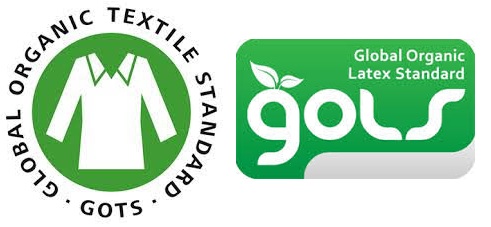
Consumer Reports has a great review of the certification labels used on organic mattresses. I was thinking I wanted to write a report like this, and then found this one.
According to their research only two certification meet their qualifications:
- Global Organic Textile Standard (GOTS)
- Global Organic Latex Standard (GOLS)
I agree. These are the certifications to look for in an organic mattress.
Here is what each of these certifications mean:
GOTS requires that at least 95 percent of the materials in the mattress be certified organic, and it prohibits outright the use of certain substances even for the other 5 percent, such as chemical flame retardants and polyurethane, the chief ingredient of memory foam.
GOLS ensures that a mattress with latex is made of organic latex, with restrictions on the other 5 percent of the mattress’s components. Natural-latex mattresses may have both the GOTS and GOLS labels.
[CORRECTION:I need to correct Consumer Reports here. GOTS does not require that at least 95% of the total materials in the mattress be certified organic. GOTS recognizes that other materials in addition to fibers are needed to make mattresses. GOTS divides the materials into two “piles”—one is the certified organic fiber and the other is the other materials needed to make the mattress. The 95% applies to the pile of fibers only. The requirement is that 95% of the fiber used in mattresses must be certified organic.]
In addition, GOTS does allow polyurethane as part of the mattress’s componets, in the 5% that is not organic fibers. This is clearly and specifically stated in the GOTS Standard 5.0, Section 2.4.9.1-d. This is specifically allowed as an “accessory” material that provides needed funcitionality, in this case waterproofing.]
Their review also explains the meaning of other certifications in simple terms.
They point out that Oeko-Tex Standard 100 doesn’t ensure that the fiber used in the mattress is produced organic all, but only sets limits for emissions of a list of harmful chemicals.
And they also explain why five other certifications you might see on a mattress have limited value.
Nontoxic Dishwasher Cleaner
Question from Bonnie
Hi Debra,
My parents are is their 80’s and can not smell anything. There was a strong cleaner smell in their kitchen – I found out it was cascade pod cleaners. Is there a nontoxic brand you know of?
Thank you.
Debra’s Answer
Readers, we’re not talking about dishwasher detergent here.
The question is about dishwasher cleaner. a product that removes limescale buildup, grease, and odors from your dishwasher.
I’m not aware of any nontoxic version of this product. And I haven’t had a dishwasher for more than 40 years, so I don’t have a solution from experience.
Readers. any recommendations?
Harvard Study Shows Pesticides in Food Cut Sperm Count in Men by Half

From the study:
Total fruit and vegetable intake was unrelated to semen quality parameters.
High pesticide residue fruit and vegetable intake, however, was associated with poorer semen quality.
On average, men in highest quartile of high pesticide residue fruit and vegetable intake (≥1.5 servings/day) had 49% (95% confidence interval (CI): 31%, 63%) lower total sperm count and 32% (95% CI: 7%, 58%) lower percentage of morphologically normal sperm than men in the lowest quartile of intake (
Low-to-moderate pesticide residue fruit and vegetable intake was associated with a higher percentage of morphologically normal sperm (P, trend = 0.04).
Eating lots of fruits and vegetables are not a problem.
Eating a lot of fruits and vegetables with pesticides greatly reduce sperm counts.
Happsy Organic Mattress-in-a-Box
 The first and only affordable certified organic mattress.Made in the USA from GOTS certified organic cotton, organic wool, and GOLS certified organic latex,specifically designed to sell at direct-to-consumer prices. $749 twin to $1499 king for basic model, additional organic pillowtop available for extra softness. Free shipping. 120-night trial and money back guarantee. Happsy now also makes foundations.
The first and only affordable certified organic mattress.Made in the USA from GOTS certified organic cotton, organic wool, and GOLS certified organic latex,specifically designed to sell at direct-to-consumer prices. $749 twin to $1499 king for basic model, additional organic pillowtop available for extra softness. Free shipping. 120-night trial and money back guarantee. Happsy now also makes foundations.
Lead-free Pottery Bowls

Question from Julia
Hi Debra,
I have been making these delicious bowls with rice, veggies, etc. I want to get pasta like bowls that are lead free. What do you suggest?
Debra’s Answer
Yes I understand, I have been making “bowls” too and I love them so much that practically every meal I eat is in a bowl!
A couple of months ago I went shopping at Crate & Barrel and found some oversize bowls that I love and use for almost every meal.
And then I found some smaller bowls I had stashed away from Pier One. I had purchased these almost 15 years ago, so I doubt they still sell the same bowls, but they probably have something similar.
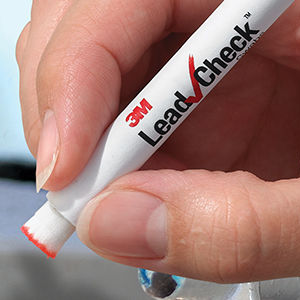 My rule of thumb has been to assume white bowls are safe and to check colored dinnerware with LeadCheck swabs. These are not considered as reliable as other forms of testing, but they are affordable and available. You can get them at any Home Depot or online.
My rule of thumb has been to assume white bowls are safe and to check colored dinnerware with LeadCheck swabs. These are not considered as reliable as other forms of testing, but they are affordable and available. You can get them at any Home Depot or online.
LeadCheck swabs are simple to use. You just rub the end of the swab against the bowl for thirty seconds and if there is lead the swab will show red. If no lead, the swab will remain white. These swabs now come in packs of 2 for about $10, so it’s more affordable to do these tests than in the past.
I used LeadCheck swabs to test two bowls that I have on my shelf and eat from every day. As I thought, they both tested negative for lead.
 |
|
| This bowl from Pier 1 is a salad or soup sized porcelain bowl. Here is a similar one from Pier 1 Imports and they come in several sizes. Note this one is made in China but still tests negative for lead. | This larger porcelain bowl from Crate & Barrel is a serving bowl. It’s called Essential Serving Bowl. It was in stock at my local Crate and Barrel store. This also comes in several sizes. Note this one is made in Indonesia and also tests negative for lead. |
I’ve become fond of putting my food in big white bowls and am actually retiring a lot of my dinnerware because I just don’t use it. White bowls are very simple and easily hold everything I eat.
I suggest purchasing white bowls and LeadCheck swabs and then bring the bowls home and test them immediately. If the swabs turn red, return the bowls and buy other bowls until you find bowls that test negative.
Here’s an article from the Chicago Tribune from 2007, when they gathered 20+ pieces of colorful dinnerware from local stores and had them tested for lead. None showed significant amounts of lead.
Many years ago I did a LeadCheck swab test on a colorful painted dinner plate for a TV show in Washington DC. And the swab did turn red right on cue. So I’ve seen the swabs test positive and negative. Mostly negative.
Is Real Salt Radioactive?

Question from Kathleen S.
Hi Debra,
My understanding of Real Salt is that it was mined in an area where nuclear testing had been done. My chiropractor said she would never use it, but recommend Celtic Salt. I read that Himalayan salt has problems too. So it seems very difficult to find any thing safe.
Debra’s Answer
I’ve done extensive research on salt and came to the conclusion that safest salts are those that come from underground sources. These are ancient sea beds that are not contaminated with modern pollution. So that would be Real Salt and The Original Himalayan Salt.
While I ate Celtic Salt for many years, I no longer eat any salts that come from the sea due to extensive pollution of sea water. Celtic Salt and some other salts are harvested from pristine areas and so are better than other sea salts, but underground salts are protected from modern pollution.
Here’s a response from Real Salt about your radiation question. Please share it with your chiropractor. “Nuclear tests were done in Nevada (not Utah) in the 1950’s, but it in terms of nuclear protection (time, distance, shielding), there is no possible contamination of our Real Salt.”
http://realsalt.com/real-salt-radiation/
Humble Seed
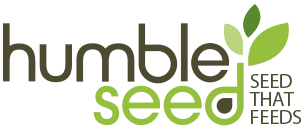 “We are dedicated to providing the highest quality heirloom, non-GMO, non-hybrid, and organic seed varieties to those who choose to start from seed. “Exseeding expectations” is an affirmation we take seriously, and we believe that the most rewarding gardening experiences begin with seed.” They sell seeds in “banks” that include collections of seeds of certain types, such as hot peppers or culinary herbs. Plus compost tea for fertilizing.
“We are dedicated to providing the highest quality heirloom, non-GMO, non-hybrid, and organic seed varieties to those who choose to start from seed. “Exseeding expectations” is an affirmation we take seriously, and we believe that the most rewarding gardening experiences begin with seed.” They sell seeds in “banks” that include collections of seeds of certain types, such as hot peppers or culinary herbs. Plus compost tea for fertilizing.
Black and Bolyard
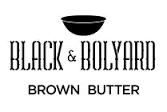 Brown butter made from non-gmo grasped cream. Brown butter is simply gently browned butter, which gives the butter a nutty flavor. Original unfiltered, or flavored with bay leaf or red chili. It’s an easy way to add a lot of flavor to any dish where you would use butter.
Brown butter made from non-gmo grasped cream. Brown butter is simply gently browned butter, which gives the butter a nutty flavor. Original unfiltered, or flavored with bay leaf or red chili. It’s an easy way to add a lot of flavor to any dish where you would use butter.
Tress of Antiquity
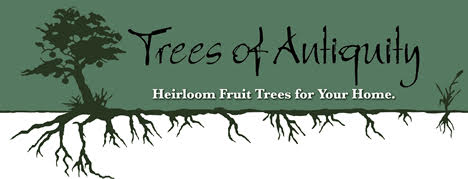 “Our nursery is centered on the rich history and future discoveries of our heirloom apples. Our nursery is very much a family effort; we plant, graft, prune, weed, water and harvest our trees with only a bit of outstanding seasonal assistance. For over 30 years we have been rediscovering the unique flavors, textures and lore that surround these fruit trees and we look forward to extending this experience to your home.” They also sell many other fruit trees and bushes and have an excellent search system that allows you to choose the correct plants for your zone, harvest period, uses, pollination and even spacing.
“Our nursery is centered on the rich history and future discoveries of our heirloom apples. Our nursery is very much a family effort; we plant, graft, prune, weed, water and harvest our trees with only a bit of outstanding seasonal assistance. For over 30 years we have been rediscovering the unique flavors, textures and lore that surround these fruit trees and we look forward to extending this experience to your home.” They also sell many other fruit trees and bushes and have an excellent search system that allows you to choose the correct plants for your zone, harvest period, uses, pollination and even spacing.

